Google, autonomous cars, robots—these are just some of the words associated with “disruption” in the property/casualty insurance industry over the past year.
Carrier Management reached out to industry executives recently, asking them to respond to a series of questions about innovation efforts at their companies. Here 11 of them answer our 11th and final question about how insurers might become a source of disruptive innovation. (Full titles of the executives and the entire list of questions are presented at the bottom of this article, with links to other responses.)
Q11: Outside of providing risk transfer solutions, what are the most likely areas in which insurers can be innovators? Can P/C insurers disrupt other industries or provide noninsurance solutions by applying innovations developed through their core skills in underwriting and risk analysis, settlement negotiations, catastrophe modeling, environmental science or other areas?
- Q1: The greatest innovation in the P/C insurance industry
- Q2: Describe the greatest innovation at your company
- Q3: Innovation or innovator outside the insurance industry
- Q4: How your company encourages innovation
- Q5: The biggest obstacle to innovation within the insurance industry?
- Q6: The next innovation to impact the P/C insurance industry
- Q7: Your role in leading innovation.
- Q8: Best book you have read about innovation
- Q9: Describe a failed initiative at your company
- Q10: Collaborating with market competitors
- Q11: Can P/C insurers disrupt other industries?
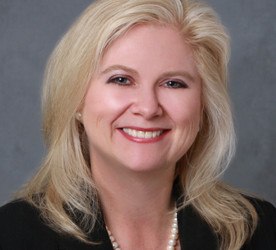
Hay (KPMG): Insurers are examining ways to leverage their expertise in telematics and potentially add telematics-based UBI devices to their portfolio of commercial and homeowners insurance products. The Internet of Things, or IoT, which refers to the integration of devices with the Internet, provides an opportunity with sensor data to prevent claims and improve customer service. Insurers could help prevent claims by managing properties proactively and warning customers of dangerous situations. For example, if a sensor on a pipe shows that the pipe might freeze, the insurer could prevent a claim by warning the owner before it is too late. Insurers have the opportunity to influence other industries looking to leverage telematics like healthcare and manufacturing by continuing to innovate telematics technology and establishing best practices for analyzing the data they’re able to collect.
Additionally, given insurers’ expertise in analyzing and pricing risk, they have an important role to play in helping the global economy adapt to and even mitigate the effects of climate change. Insurers can help incentivize new technologies; offer policies that encourage people to reduce carbon emissions and follow environment-friendly practices; help improve building codes; participate in the ongoing regulatory dialogue; and ultimately foster safer communities.
Rios (American Modern): Through research by the industry-funded Insurance Institute for Business & Home Safety, insurers can help trigger innovative changes in building materials and techniques to advance disaster-resistant construction. (Editor’s Note: Manny Rios is no longer the CEO of American Modern.)

Hendrick (XL Catlin): Collaboration with outside risk consultants is where we will make the greatest impact on providing risk assistance other than risk transfer solutions. For instance, we’ve developed exclusive partnerships with specialized risk consultancies to add much more value to our clients’ risk management efforts. As an example, in North America, we’ve partnered with the Acheson Group—founded by Dr. David Acheson, who formerly headed the U.S. Food and Drug Administration—to provide our clients with the best product recall advice. By partnering with such expertise, we give our clients exclusive access to the most knowledgeable risk resources. We really aim to create a dynamic partnership. We don’t want to be the company that just issues an insurance policy and addresses a loss if something happens.
Watson (Argo): This is a truly exciting time for the insurance industry. The digital revolution we find ourselves in will enable a cross-pollination of core skills and capabilities across industries and sectors that can drive new opportunities for commerce to thrive. At the center of it all will be our customer. In the new socialized economy, the customer has earned the right to place increasing demands on insurers and other service providers. They want transparency. Let’s find ways to deepen trust. They want connection. Let’s find ways to fortify relevancy. They want simplicity. Let’s find ways to integrate technology. Let’s find ways to deliver the experience they deserve.
Kelley (Ironshore): Insurance companies can provide the market with services surrounding coverage to help clients identify and mitigate evolving market risks.
Ironshore builds relationships with sector-specific experts—financial advisors, consultants and industry professionals that can offer an additional level of insight regarding identification of risk exposure and approaches for managing potential financial or reputational impact. Risk financing services, engineering evaluations, environmental science assessments that enhance a new product offering are just a few examples.
Assisting our clients and distribution partners to better identify and manage inherent risk in the exposure distinguishes our approach for providing specialty sector risk transfer solutions.
Wurzler (OneBeacon Technology): In this day and age, I feel it is important for a specialty carrier to add value to the insurance solution through services. We must also continually evaluate these services to ensure they remain relevant to the insured and help mitigate risk. For example, we provide data breach notification and response handling, safety training and employment background verification services. Some of the services we offer alongside or embedded within our products today did not even exist a year or two ago, such as a cyber-framework analysis. These services are among those that differentiate OneBeacon in marketplace.
Colberg (Assurant): Insurers are uniquely positioned to find problems that exist and create end-to-end solutions that safeguard customers where others cannot. Insurance companies are already disrupting markets in the way they are leveraging telemetrics and co-creating programs like we did with JUMP, a premium handset upgrade program that we launched in partnership with T-Mobile. Understanding consumer desire for the latest smartphone and the risk event, we were able to create a hugely successful program with T-Mobile that provides handset insurance, extended service protection and mobile security, and all with the ability to upgrade or trade in your device at any time.
Lightfoot (Guy Carpenter): There is a fundamental link between risk and capital, and quantifying that risk to inform how capital is deployed also applies to other industries. What’s been innovative in reinsurance—looking at portfolios and using actuarial and natural sciences to develop risk metrics—can be applied on a smaller basis or even to a single risk. The reinsurance industry has produced a tremendous amount of innovation in risk management, and that work is relevant to all insurance companies, as well as companies in other commercial industries. All management teams want to know more about the risk they face to help them be better stewards of the capital on which their organizations are based.

Rao (PwC): Insurers have a great opportunity to expand from risk transfer solutions to loss reduction/loss management services. This allows them to be more deeply embedded in the insured operations and to understand the drivers for risk and losses. Insurers that can develop the skills and capabilities to be more operationally embedded with their customers stand to substantially expand their revenues and profitability.
Insurers can exploit their core actuarial and analytics skills to evaluate emerging risks, such as climate change, cyber risk, supply chain risk. In addition, they have an opportunity to expand from asset protection (through insurance) to maximizing asset utilization. For example, a startup technology company was able to transform crop insurance to yield management for farmers using sophisticated data and analytics. They were able to extract a far greater value for their shareholders by broadening their scope of activities.
Lee (AIR Worldwide): Absolutely. The P/C industry has clearly demonstrated its analytical mindset in underwriting, risk analysis and other areas. When that mindset is directed at risk mitigation, it will certainly help other industries in many ways.
For example, risks associated with cyberspace are growing all around us. AIR is working in partnership with insurers to develop risk assessment methodologies for cyber risk, which I also hope will drive best practices to mitigate the risk.
Another example is supply chain—we are developing analytical approaches to better assess and protect from supply chain disruptions. This can help manufacturers in many industries, as well as help insurers better understand business interruption risks.
Taking a different angle, I think catastrophe modelers can bring enormous value and innovation to tackling some of the world’s other pressing problems, such as helping communities become more resilient from natural disasters.
For example, AIR is a founding member of the Global Earthquake Model (GEM) project. The goal is to develop the first global open-source model for seismic risk assessment, thereby delivering the expertise of the global scientific community to nations that would otherwise be neglected.
An even more immediate example is an outcome of our work with the World Bank and the Asia Development Bank. Here AIR recently played a critical role in Vanuatu’s recovery after Category 5 Cyclone Pam made a direct hit on the island in March, triggering a payout under the Pacific Catastrophe Risk Assessment and Financing Initiative (PCRAFI). AIR was the calculation agent for the transaction.
Personally, I am very honored to have been recently elected as a member of the Board of Trustees of Geohazards International, whose mission is to “end preventable death and suffering from natural disasters” in the world’s communities most at risk…through preparedness and mitigation.”
So there is enormous opportunity for catastrophe modelers to make a genuine difference on the ground, and I am very proud that AIR is a part of that.
Galanski (Navigators): While it is tempting to think about disruptive technologies, insurers are best at innovating when they succeed in two fundamental areas. First, by providing fantastic service through creating a pleasant, efficient and unique experience in which their brokers and policyholders can interact with them. Second, by empowering the most talented people they can find, which requires a superior work environment in which they can prosper and desire to build a long-term career. The two are inextricably linked. Great service comes from terrific people working in a positive and fun environment. That’s an environment in which innovation will be evident.
Read more innovation responses:
- Q1: The greatest innovation in the P/C insurance industry
- Q2: Describe the greatest innovation at your company
- Q3: Innovation or innovator outside the insurance industry
- Q4: How your company encourages innovation
- Q5: The biggest obstacle to innovation within the insurance industry?
- Q6: The next innovation to impact the P/C insurance industry
- Q7: Your role in leading innovation.
- Q8: Best book you have read about innovation
- Q9: Describe a failed initiative at your company
- Q10: Collaborating with market competitors
- Q11: Can P/C insurers disrupt other industries?
Click on the each executive to reveal their responses.
 Stanley A. Galanski, President and CEO, The Navigators Group, Inc.
Stanley A. Galanski, President and CEO, The Navigators Group, Inc. Mark E. Watson III, President and Chief Executive Officer, Argo Group International Holdings, Ltd.
Mark E. Watson III, President and Chief Executive Officer, Argo Group International Holdings, Ltd. Kevin H. Kelley, Chief Executive Officer, Ironshore Inc.
Kevin H. Kelley, Chief Executive Officer, Ironshore Inc. John Wurzler, President, OneBeacon Technology Insurance
John Wurzler, President, OneBeacon Technology Insurance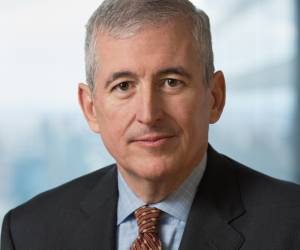 Alan B. Colberg, President and Chief Executive Officer, Assurant, Inc.
Alan B. Colberg, President and Chief Executive Officer, Assurant, Inc. Manny Rios, President and CEO, American Modern Insurance Group
Manny Rios, President and CEO, American Modern Insurance Group Dave Pratt, General Manager, Usage-Based Insurance, Progressive
Dave Pratt, General Manager, Usage-Based Insurance, Progressive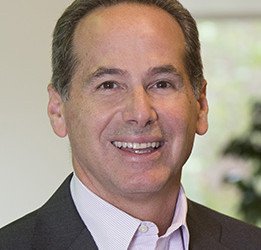 Berto Sciolla, EVP and Manager of North American Treaty Reinsurance,Gen Re
Berto Sciolla, EVP and Manager of North American Treaty Reinsurance,Gen Re Greg Hendrick, Chief Executive, Insurance, XL Catlin
Greg Hendrick, Chief Executive, Insurance, XL Catlin Anand Rao, Principal, PwC U.S. Advisory Practice
Anand Rao, Principal, PwC U.S. Advisory Practice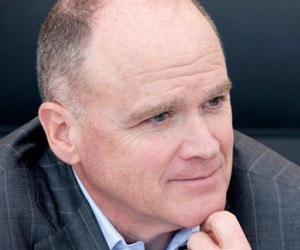 Mike McGavick, Chief Executive Officer, XL Catlin
Mike McGavick, Chief Executive Officer, XL Catlin David M. Lightfoot, Managing Director, Head of GC Analytics – Americas, Guy Carpenter
David M. Lightfoot, Managing Director, Head of GC Analytics – Americas, Guy Carpenter Conan Ward, Chief Executive Officer, Hamilton USA
Conan Ward, Chief Executive Officer, Hamilton USA Ming Lee, Chief Executive Officer, AIR Worldwide
Ming Lee, Chief Executive Officer, AIR Worldwide Laura Hay, National Insurance Sector Leader, KPMG LLP
Laura Hay, National Insurance Sector Leader, KPMG LLP John Lupica, Vice Chairman, ACE Group; Chairman, Insurance–North America
John Lupica, Vice Chairman, ACE Group; Chairman, Insurance–North America
Get all 16 interview neatly packaged in a single PDF download. Explore ideas by personality and by question. More than 60 pages of content.





















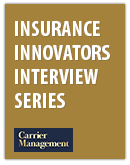
 Time-Tested Loss Reserving Methods Challenged: AM Best
Time-Tested Loss Reserving Methods Challenged: AM Best  Maritime Law Invoked By Ship Owner in Baltimore Bridge Collapse to Cover Salvage Costs
Maritime Law Invoked By Ship Owner in Baltimore Bridge Collapse to Cover Salvage Costs  Going, Going, Gone: ‘Disruption’ to Shrink Traditional Premiums for Auto
Going, Going, Gone: ‘Disruption’ to Shrink Traditional Premiums for Auto  The Supreme Court Just Complicated Employer Diversity Initiatives
The Supreme Court Just Complicated Employer Diversity Initiatives 


